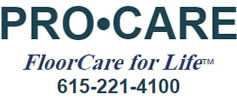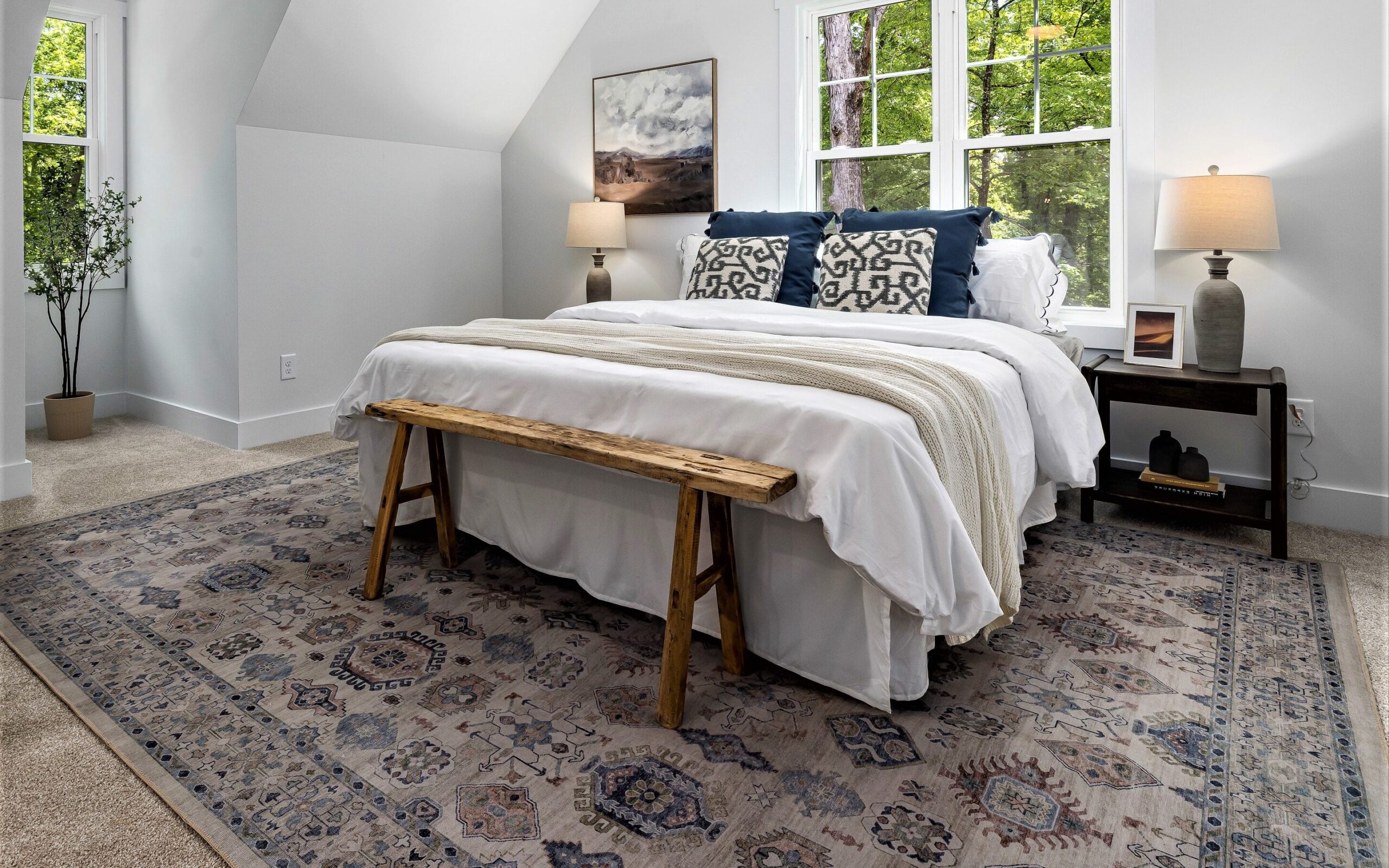
Today’s area rugs are more central to residential decor than ever. You may be a trend watcher or you may be currently working with a professional designer. Either way, you know that rugs are key to good design. Rugs tie a room together, add warmth and texture and create an inviting atmosphere in any space. Rugs make a bedroom cozier, a dining area more elegant or a play space more, well, playful. No matter the application, a well-chosen rug can provide utility and beauty. But here’s the takeaway. When you find that perfect rug, keep in mind that what lies beneath it matters just as much. For optimal performance you want to pair your rug with the best rug pad out there.
Ah, the rug pad, unsung hero of floor fashion. These often overlooked textiles can impact the longevity, comfort and safety of your rugs. There are all sorts of rug pads on the market. Not every underlayment is right for every application. We can help you see the perks of rug pads and help narrow down the best rug pad for your household. Let’s delve into the top 5 reasons why using a rug pad under your area rug is a sound investment in home design and safety.
Reason 1: Put Safety First.
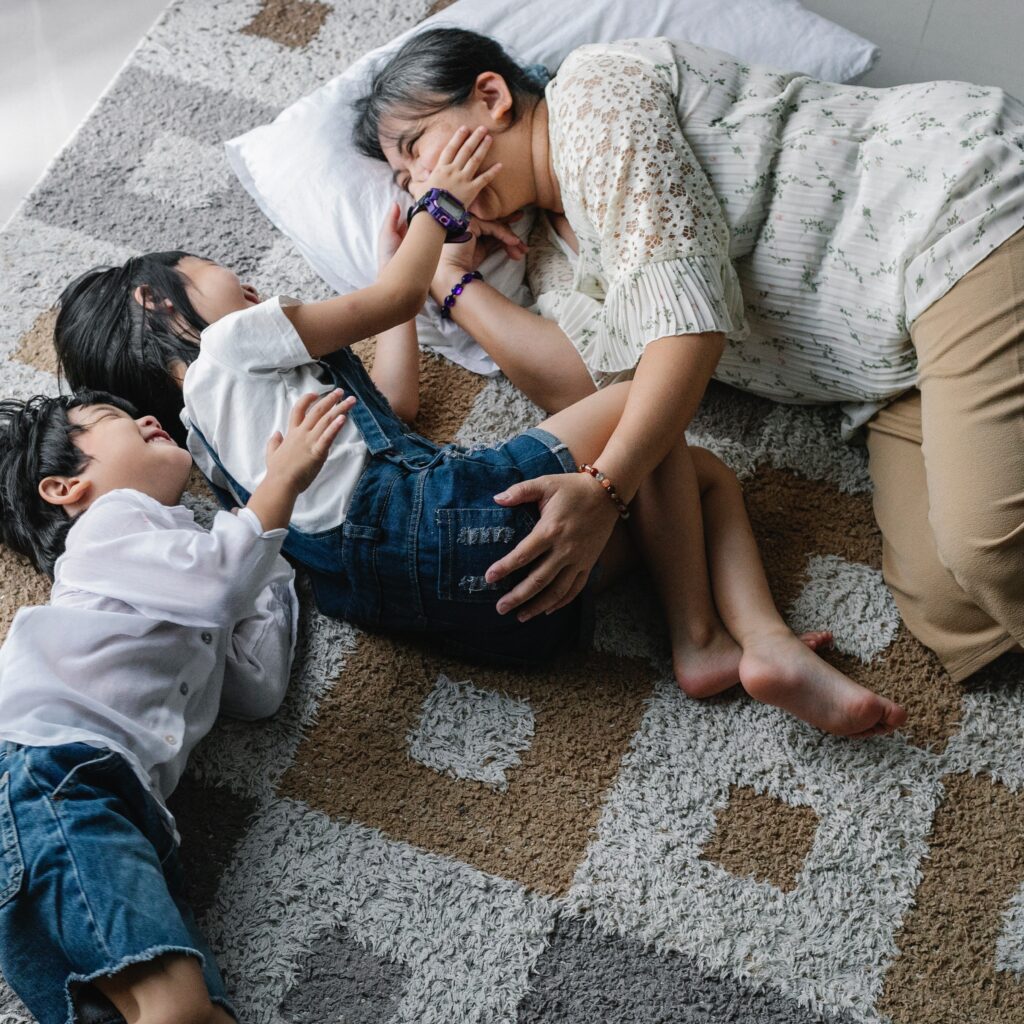
Rugs add style and comfort to your living spaces. But they can pose a safety hazard if not properly secured. A rug that shifts or slides underfoot is not only annoying but it can lead to trips, slips and falls. This is a particular concern in households with children, elderly individuals or pets who might not have the same stability as adults. Not sure how to anchor your rug effectively? Rug pad to the rescue!
Your safety net against accidental tumbles, the best rug pad grips both the rug and the floor. This double resistance prevents a rug’s unwanted movement. Part of the safety-first protocol of using a rug pad is making sure your underlayment is sized and placed properly. Experts in the rug industry advise that a rug pad is slightly smaller than the dimensions of your rug. Cut your pad an inch or two shorter along every edge. That allows the rug to drape down to your flooring surface on all sides. It’s a great way to reduce the chance that someone walking onto the rug will catch the edge. A slightly smaller underlayment keeps you from having constantly to adust the rug to hide the pad from view. The key is to center the underlayment under your rug for the best performance.
Reason 2: Enhance Your Rug’s Longevity.
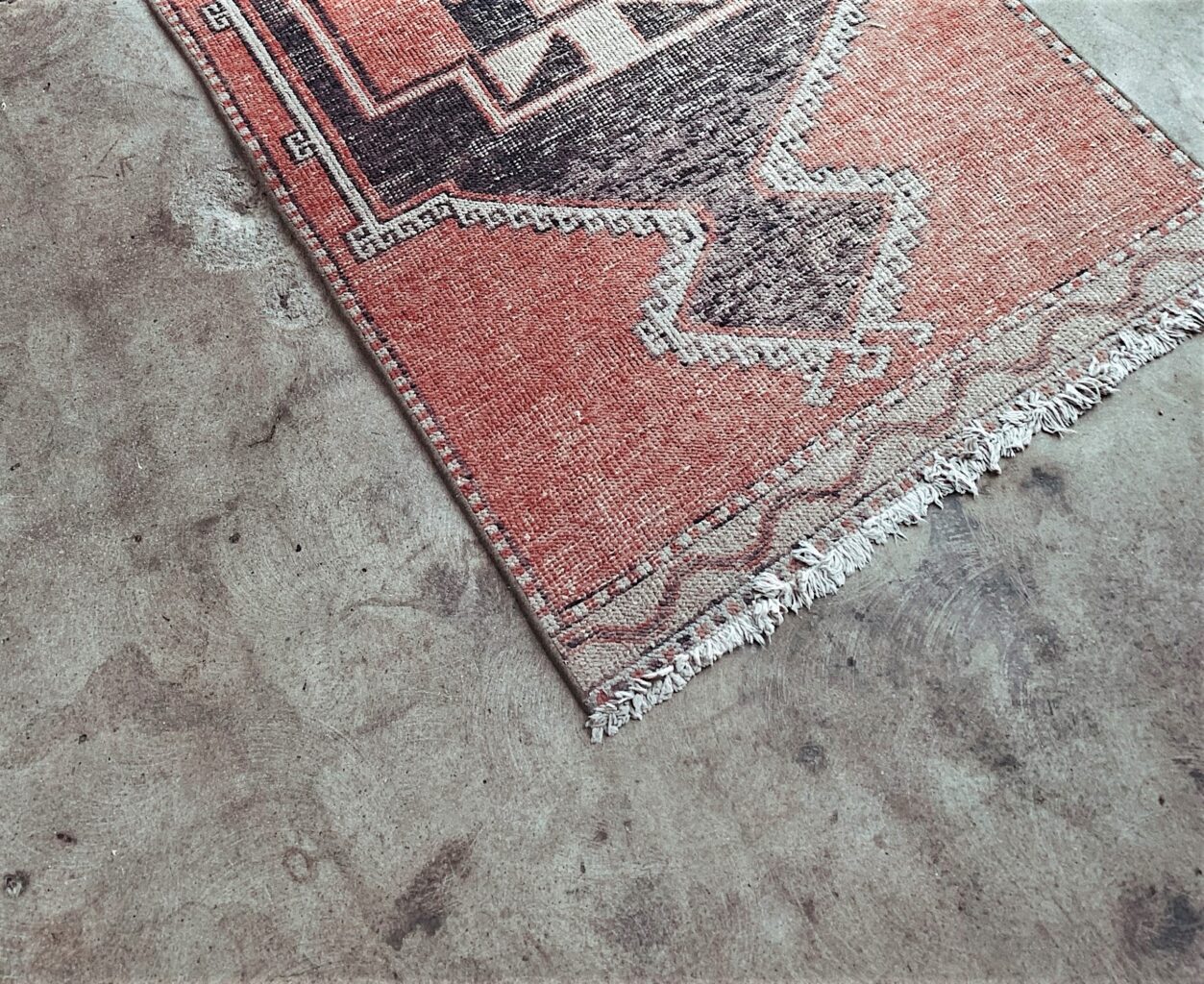
Imagine investing in a stunning area rug, only to notice early signs of everyday wear and tear. This scenario is where a rug pad excels. Rug pads prevent the friction that is caused when the rug rubs against a hard surface by acting as a barrier between your rug and floor.
Your floors may be hardwood, tile, stone or laminate. In every case, rug pads offer a cushioning layer that absorbs the impact of foot traffic, reducing the stress on the rug fibers. The only thing that offers your rugs more protection against soiling damage is regular cleaning. So use a rug pad to extend the life of your rugs, protecting them for years of enjoyment.
Reason 3: Protect your Wall-to-Wall Flooring with the Best Rug Pad for Your Floor.
The flip side of rug care is care of the flooring underneath an area rug. Your floors deserve as much TLC as your rugs do. When a rug lies directly on tile, laminate, stone, hardwood or other types of flooring, it can cause scratching, discoloration and damage. The rubbing and friction may wear away the finish on your flooring or allow color transfer to that surface. Even rugs layed over wall-to-wall carpet need an underlayment to minimize damage. Harm due to unprotected rugs interacting with your floors can be costly, even impossible, to repair.
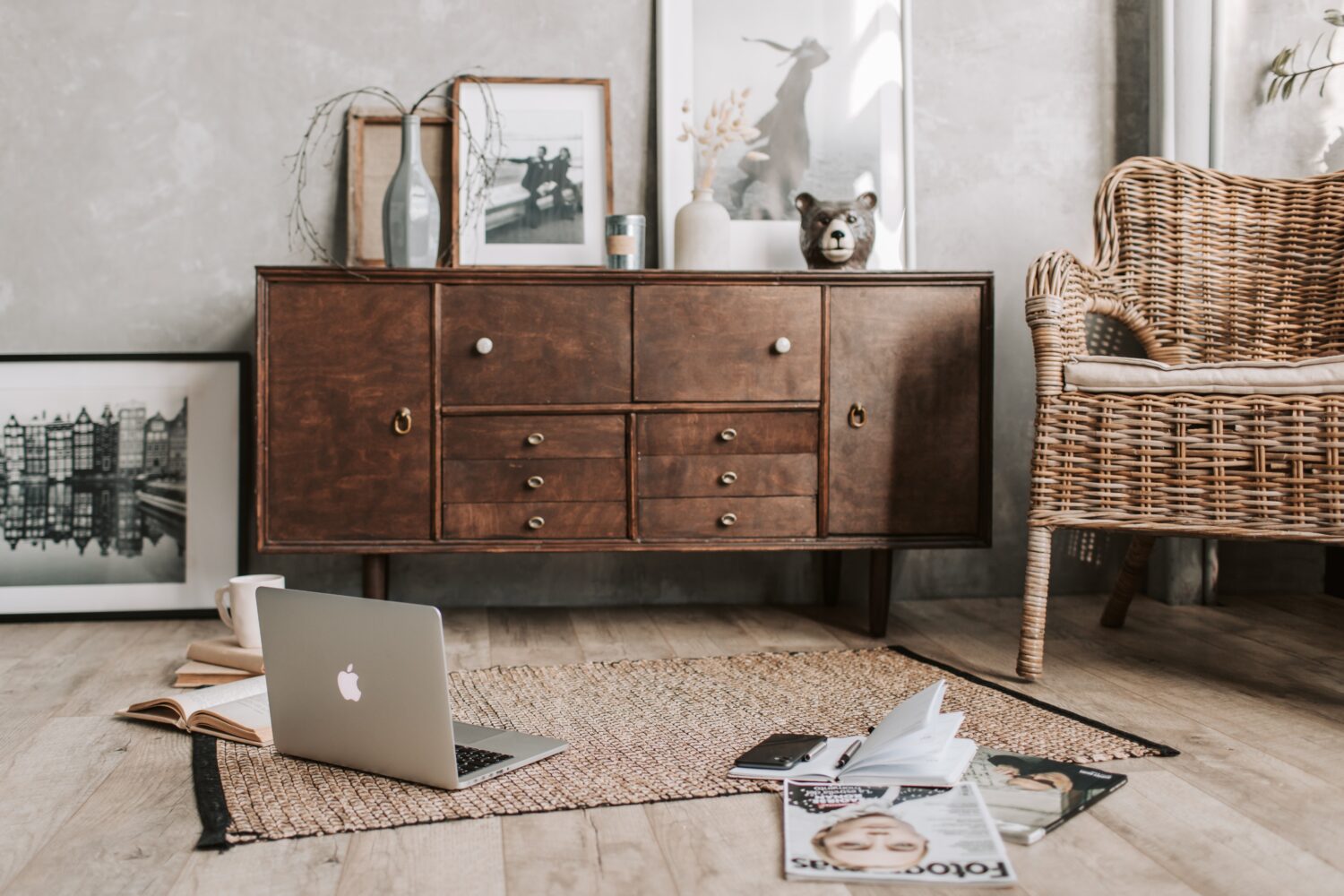
The best rug pad acts as a protective barrier, shielding your floors from potential damage caused by the movement of the rug. It is almost like having a full-time guardian for your floors. Underlayment products help preserve the condition of your flooring despite foot traffic and other causes of wear and tear.
Remember, when you move out of your home, you may take your rugs with you but you’ll be leaving your floors behind. We’re betting you’ll want to get top dollar for that home sale. You’ll likely not want to repair or replace floors that have sustained damage from unprotected rug traffic.
Reason 4: Improve your Home’s Liveability
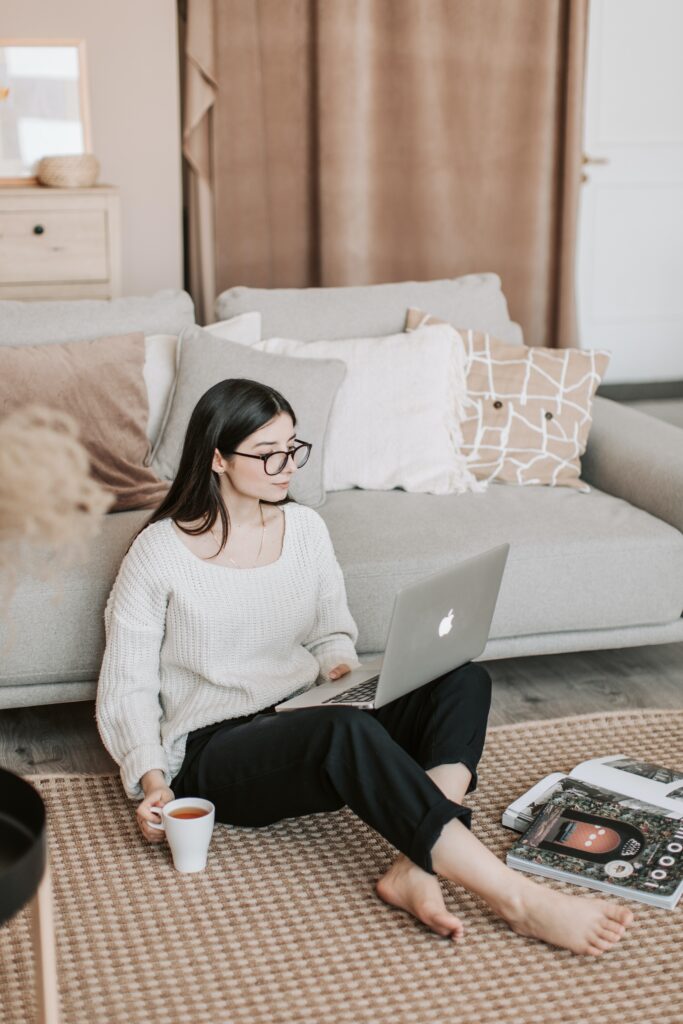
Home comfort takes many forms but it all comes down to the ways our senses experience our living spaces. When we’re talking about rugs, the sense of touch comes to mind first. Imagine, for example, stepping out of bed onto a chilly, hard floor on a winter morning. Now imagine that same winter morning when you step onto a plush, soft surface that cushions your feet and provides a cozy, warm experience. Makes it easier to get out of bed, doesn’t it? But much of that magic is thanks to your rug pad. In addition to protecting your rug and floors, the best rug pad adds a layer of comfort underfoot.
Another sensory benefit of a rug pad and of rugs in general, are the way these textiles help absorb noise pollution in a home. Especially in open-concept layouts and spaces with extensive hard surfaces – including walls, floors, and oversized windows, rugs and rug pads serve regulate bouncing sound waves. A TV with hi-definition speakers or a group of active young people don’t have to take over the sound profile of your living area. By placing rugs with underlayment materials strategically throughout a room, you can insure a more comfortable and more peaceful environment.
Reason 5: Keep a Healthier Home Environment.
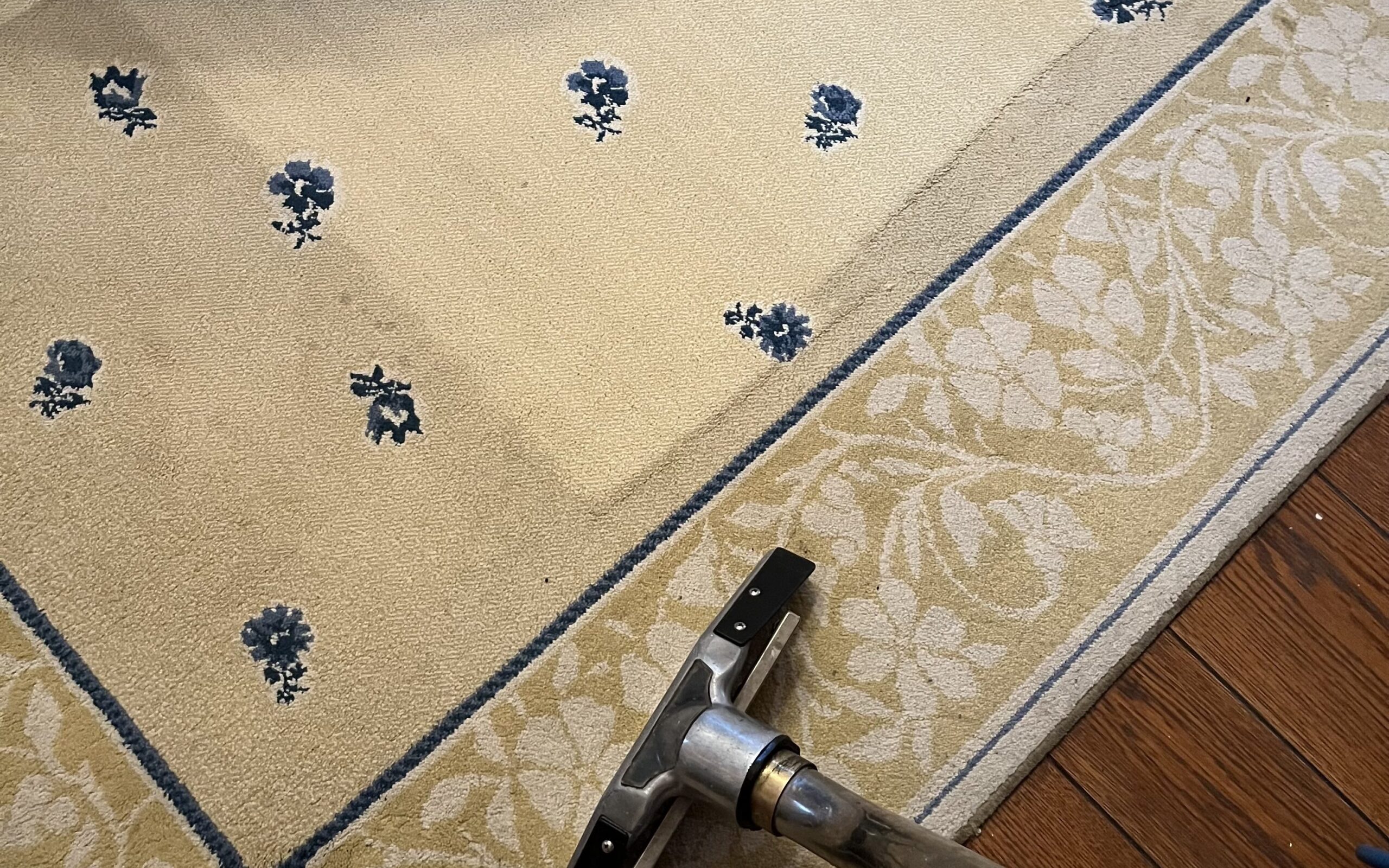
Rug pads keep rugs in place. That is especially important when you are vacuuming your rug. A rug pad should prevent your rug from wrinkling and bunching over time. This makes for easier maintenance too. Homeowners may not realize that an underlayment can catch both soil and broken rug fibers that sift through a rug over time. These particles are erosive to the flooring underneath. You can corral more of the dust and dirt that a rug tends to collect by cleaning the rug pad periodically. Keep in mind that some rug pads are too porous to be vacuum. We’ll talk more about underlayment options below.
A rug pad also contributes to the health of your home by making space for air circulation between the rug and the floor. Air flow is key to reducing bacterial growth and harmful allergens and to preventing soiling odors. This circulating effect is especially important in humid climates or areas prone to moisture which leads to mold and mildew growth. With a rug pad, you can enjoy easier rug maintenance and a cleaner, fresher living environment.
Pro Tip: How do you pick the best rug pad for your home?
Rug pads come in a variety of constructions and some do more damage than good. Make sure the underlayment you choose is matched to the type of flooring and to the size of the rug. Here is some advice that may help you choose the best rug pad for your rug and setting. Let’s start with two basic categories.
- PVC Rug Pads are made of chemicals that can damage hardwood flooring and can void the warranty of the floor. People often choose this product because it is easily sourced at local big box stores and it is generally inexpensive. However, the PVC material can off gas chemicals called VOCs (volatile organic compouds) which are toxic to your home’s indoor air quality.
- 100% Felt Rug Pads are on the opposite end of the underlayment industry. They provide extra cushion and support for areas of your rug where heavy furniture causes compression. The best rugs to pair with a 100% Felt product are larger and heavier. Small and medium rugs do not have the weight to secure the thickness of the felt.
Felt Blend Rug Pads
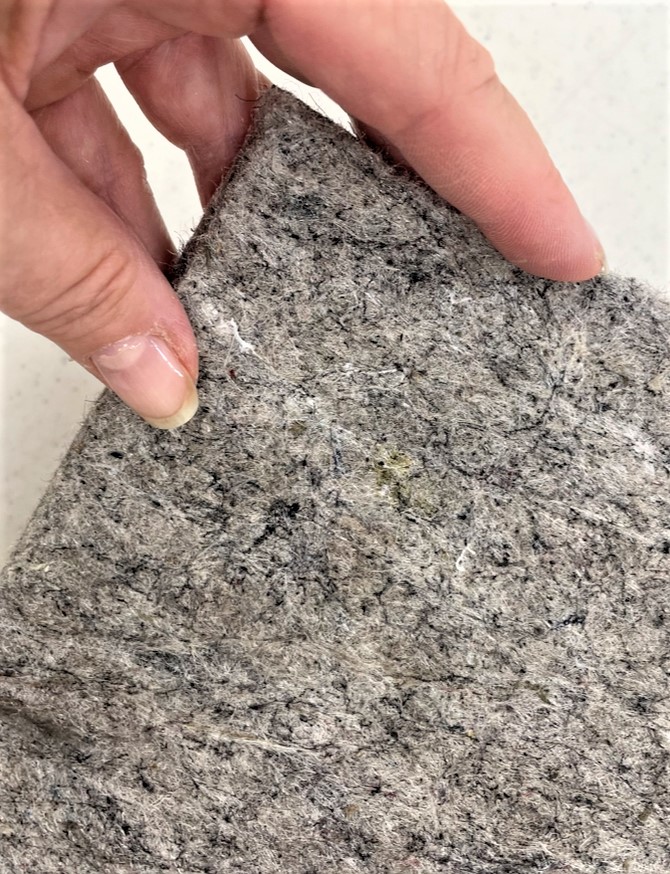
- A Felt and Rubber blend is the best all-around rug pad and is suitable to a variety of applications. These blends offer more grip and last longer. The kind of rubber used is key. Spray on rubber coatings degrade over time. The best underlayments have a “scratchy” top side and a “grippy” under side. The top grabs hold of rug fibers and prevents movement while the bottom secures the rug to its place on the floor.
- Another Blend to consider is a rug pad made of Felt and EVA Foam. This combination has been created to respond to the LVT (luxury vinyl tile) trend. Even designers are sometimes unaware of the potential chemical interaction between rubber or latex backed rugs and the vinyl floor surface. Damage can include sticking, yellowing or staining of the vct which is a result of the chemical combination and in a failure to circulate air. The Felt/EVA product provides better air movement and is approved for all vinyl flooring categories.
- One last underlayment option is a blend of Felt and PVC. While most PVC should be avoided, there are safer PVCs out there that preserve consumer health and safety. This product is a little more budget friendly without compromising household health. It encourages air circulation but still has non-skid properties. The felt and pvc product is low profile which lets rugs lay flatter. Lastly, this option is meant to be used on all interior floor surfaces, including tile, hardwood, linoleum, vinyl, laminates, concrete and even rug-to-carpet scenarios.
Budget Up Front and Be Happier, Longer.
Rug pads may not be the most glamorous topic in the world of interior design, but their impact on your home’s style, safety and comfort is undeniable. From extending the life of your rugs to protecting your floors and providing a cozy foot feel, the best rug pad offers a host of benefits that makes it a worthwhile investment.
When you incorporate a rug pad into your decor plan, it’s like giving your rug the royal treatment, ensuring it ages gracefully and maintains its beauty over time. That same underlayment pad is a great first step in keeping soil and rug fibers from abrading your flooring. By pairing a rug pad with the periodic vacuuming and regular professional cleaning of your rugs, you reduce friction and protect the health of your home.
If it’s time to budget for your next rug purchase, factor in the cost of a quality rug pad too. And if you already have a rug, especially one placed on a vulnerable hardwood or scratchable stone floor, measure for a rug pad and place that order as soon as you click away from this article! There are a host of online resources that can help you choose the best rug pad for your home and lifestye. When you embrace the benefits of rug pads, you protect your investments in both your rug and your flooring and you create a luxurious and secure living environment that makes any apartment or house into a home.
